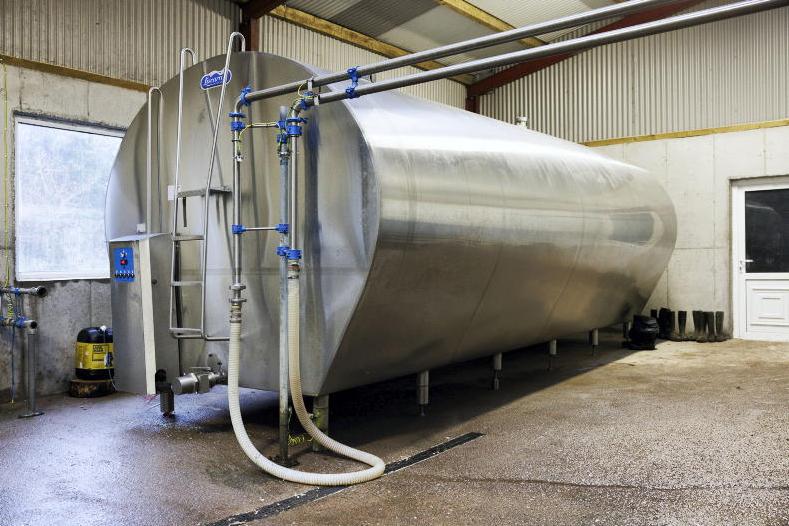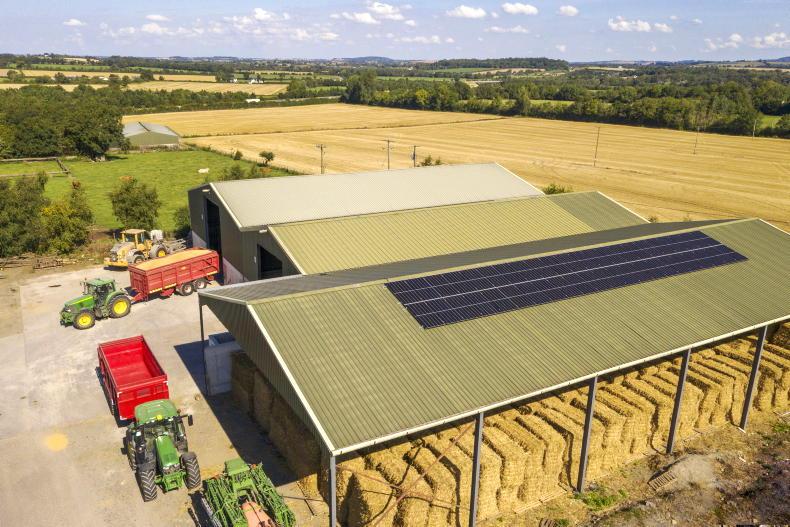Periodic changes occur to all farm building and infrastructure guidelines issued by the Department of Agriculture.
For farmers building without grant aid, these are just good practice and are recommended to be followed; but they are not enforced by any body as such.
For those completing work under grant aid, namely TAMS, then these specifications must be followed to avoid penalties or having to carry out remedial work.
A number of weeks ago, we looked at the change implemented with overground slurry stores; this week we see that several changes have been made by the Department regarding S106 Milking premises and dairies, which is primarily concerned with the dairy area of the building.
The majority of these changes reflect the more frequent use of backup generators to power milking units due to storm damage to power lines over the last few months and years.
The first stipulation that has been added is that all materials and equipment used in the construction and fitting out of buildings or investments to this specification shall be sourced as new.
Second-hand or previously used materials or equipment are not permitted in grant-aided structures or as part of grant-aided investments.
This has always been the case with regard to grant aided projects, but its inclusion in S106 appears to be one of the recent amendments to the document.
Some of the other amendments are listed below.
Cleaning of bulk tanks
For new dairies an unobstructed clear space of at least 600mm shall be provided all around the bulk tank to facilitate cleaning.
This space is exclusive of space required for other equipment.
For existing dairies an unobstructed space, of at least 600mm, shall be provided around an existing or new bulk tank, on at least three sides, to facilitate cleaning.
In new dairies the unobstructed space shall be provide all round the tank
Electrical installation
The Safe Electric (formerly ETCI) certificate shall be accompanied by the completed ‘Test Record Sheet’ for the installation, setting out a description of the installation, circuit details including type and ratings of protective devices, and test results.

All dairy farms shall be fitted with a mains isolator change over switch to enable the connection of a back-up generator, as per the S106 guidelines.
The appropriate certificate (systems for new parlours above 50kVa, new parlours below 50kVa or existing systems) should be accompanied by the Test Record Sheet, which if in electronic form, must be printed out. All dairy farms shall be fitted with a mains isolator changeover switch to enable the connection of a back-up generator, as per the S106 guidelines.
Back-up PTO generators
The generator shall be driven by the PTO of a tractor or a stationery engine (either diesel, petrol or lpg) that is fixed to the generator. All back-up generators shall be wired into the electrical system on the holding. The generator shall be located so that the tractor or stationery engine will be outdoors when operating. The connecting of the generator to the electrical system on the farm shall be certified in accordance with electrical installation practice set out in section 12 of S106.
All farms installing a generator shall be fitted with a mains isolator changeover switch to enable the safe operation of the back-up generator. The generator maybe either single phase or 3-phase depending upon the requirements of the holding.
All generators shall be designed for continuous operation. Each generator shall be fitted with AVR (Automatic Voltage Regulator) control, circuit breaker, mounting frame and a control box with meters for volts, amps and frequency.
It is recommended that the generator is fitted with overload protection and a speed indicator light. The back-up generator should be sized to match the loading on the holding. It is recommended that expert advice is sought in relation to selecting the correct size generator to ensure that the back-up generator can provide sufficient power during power cuts.
Milk meters
Where milk meters are installed as part of a new milking machine, or retrofitted to an existing milking machine, they shall be ICAR certified and shall be able to take milk samples. The milk meters shall be fully calibrated in accordance with manufacturers’ instructions. The milk meters may be designed for either manual milk recording or fully automatic milk recording.
Other changes of note
While variable speed drives on all units or extensions above seven units is mandatory, the fitting of variable speed drives to dump line milk pumps is optional.Where plate coolers, or other milk pre-coolers, are installed they shall be fitted with a solenoid valve, or other similar system, to automatically turn off the cooling water flow while the milk pump is not running. It is permitted for there to a be short delay, of not more than 10 seconds, between the milk pump turning off and the plate cooler water flow being stopped.For external bulk tanks and milk silos, the pipe work extending from the dairy to the external bulk tank shall be designed so that it is automatically cleaned along with the rest of the milking machine after each milking, in the same manner as if the tank was in the dairy.Specifications have also been issued regarding barriers surrounding external bulk tanks (see S106 for full details).
Periodic changes occur to all farm building and infrastructure guidelines issued by the Department of Agriculture.
For farmers building without grant aid, these are just good practice and are recommended to be followed; but they are not enforced by any body as such.
For those completing work under grant aid, namely TAMS, then these specifications must be followed to avoid penalties or having to carry out remedial work.
A number of weeks ago, we looked at the change implemented with overground slurry stores; this week we see that several changes have been made by the Department regarding S106 Milking premises and dairies, which is primarily concerned with the dairy area of the building.
The majority of these changes reflect the more frequent use of backup generators to power milking units due to storm damage to power lines over the last few months and years.
The first stipulation that has been added is that all materials and equipment used in the construction and fitting out of buildings or investments to this specification shall be sourced as new.
Second-hand or previously used materials or equipment are not permitted in grant-aided structures or as part of grant-aided investments.
This has always been the case with regard to grant aided projects, but its inclusion in S106 appears to be one of the recent amendments to the document.
Some of the other amendments are listed below.
Cleaning of bulk tanks
For new dairies an unobstructed clear space of at least 600mm shall be provided all around the bulk tank to facilitate cleaning.
This space is exclusive of space required for other equipment.
For existing dairies an unobstructed space, of at least 600mm, shall be provided around an existing or new bulk tank, on at least three sides, to facilitate cleaning.
In new dairies the unobstructed space shall be provide all round the tank
Electrical installation
The Safe Electric (formerly ETCI) certificate shall be accompanied by the completed ‘Test Record Sheet’ for the installation, setting out a description of the installation, circuit details including type and ratings of protective devices, and test results.

All dairy farms shall be fitted with a mains isolator change over switch to enable the connection of a back-up generator, as per the S106 guidelines.
The appropriate certificate (systems for new parlours above 50kVa, new parlours below 50kVa or existing systems) should be accompanied by the Test Record Sheet, which if in electronic form, must be printed out. All dairy farms shall be fitted with a mains isolator changeover switch to enable the connection of a back-up generator, as per the S106 guidelines.
Back-up PTO generators
The generator shall be driven by the PTO of a tractor or a stationery engine (either diesel, petrol or lpg) that is fixed to the generator. All back-up generators shall be wired into the electrical system on the holding. The generator shall be located so that the tractor or stationery engine will be outdoors when operating. The connecting of the generator to the electrical system on the farm shall be certified in accordance with electrical installation practice set out in section 12 of S106.
All farms installing a generator shall be fitted with a mains isolator changeover switch to enable the safe operation of the back-up generator. The generator maybe either single phase or 3-phase depending upon the requirements of the holding.
All generators shall be designed for continuous operation. Each generator shall be fitted with AVR (Automatic Voltage Regulator) control, circuit breaker, mounting frame and a control box with meters for volts, amps and frequency.
It is recommended that the generator is fitted with overload protection and a speed indicator light. The back-up generator should be sized to match the loading on the holding. It is recommended that expert advice is sought in relation to selecting the correct size generator to ensure that the back-up generator can provide sufficient power during power cuts.
Milk meters
Where milk meters are installed as part of a new milking machine, or retrofitted to an existing milking machine, they shall be ICAR certified and shall be able to take milk samples. The milk meters shall be fully calibrated in accordance with manufacturers’ instructions. The milk meters may be designed for either manual milk recording or fully automatic milk recording.
Other changes of note
While variable speed drives on all units or extensions above seven units is mandatory, the fitting of variable speed drives to dump line milk pumps is optional.Where plate coolers, or other milk pre-coolers, are installed they shall be fitted with a solenoid valve, or other similar system, to automatically turn off the cooling water flow while the milk pump is not running. It is permitted for there to a be short delay, of not more than 10 seconds, between the milk pump turning off and the plate cooler water flow being stopped.For external bulk tanks and milk silos, the pipe work extending from the dairy to the external bulk tank shall be designed so that it is automatically cleaned along with the rest of the milking machine after each milking, in the same manner as if the tank was in the dairy.Specifications have also been issued regarding barriers surrounding external bulk tanks (see S106 for full details). 










SHARING OPTIONS